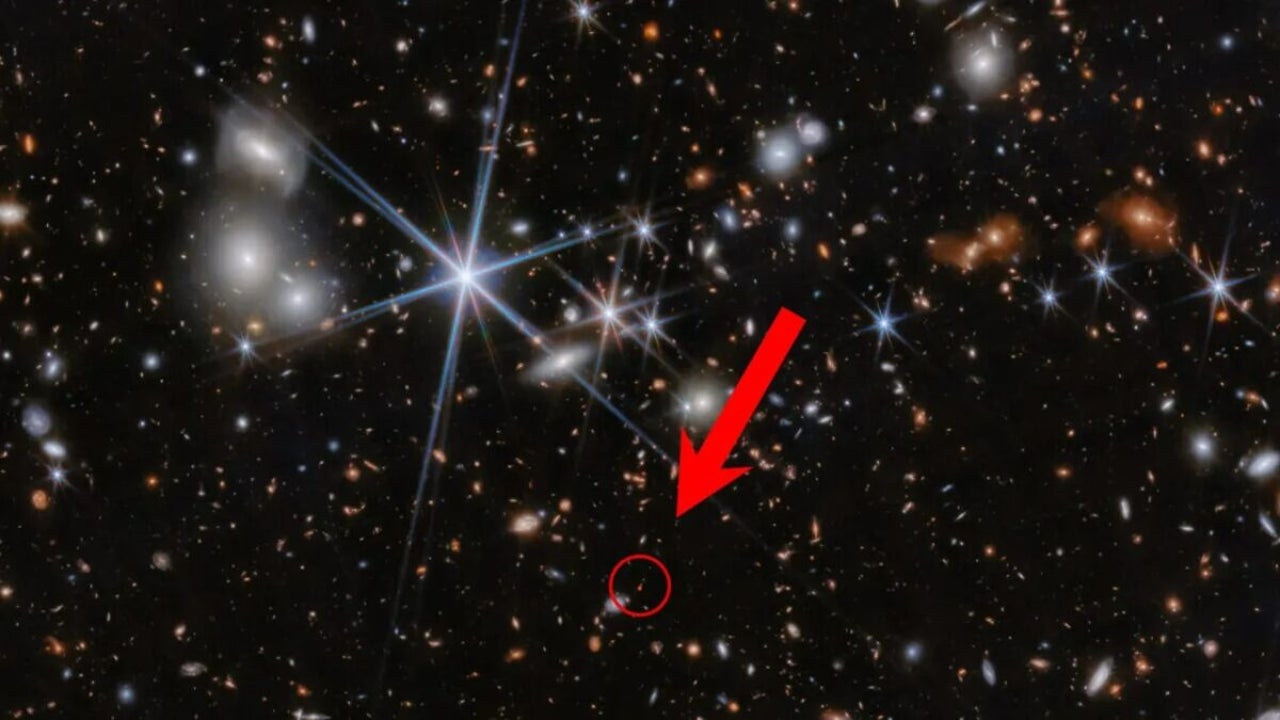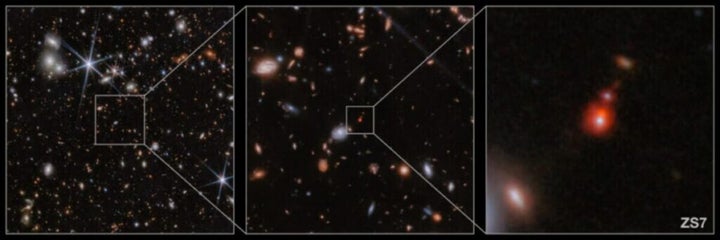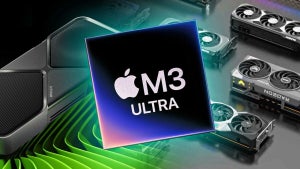News
Two black holes collided “shortly” after the Big Bang, and now we can see it
The James Webb telescope once again shows us a hidden gem of deep space.

- May 17, 2024
- Updated: May 23, 2024 at 6:41 AM

A group of astronomers has discovered, thanks to the James Webb Space Telescope (JWST), the farthest ever detected merger of supermassive black holes. As reported by Space.com, these colliding black holes are located at the center of merging galaxies, so distant that the observed event occurred only 740 million years after the Big Bang, in a young universe of 13.8 billion years.
For some time, astronomers have suspected that supermassive black holes, with masses millions or billions of times that of the Sun, play a crucial role in cosmic evolution. The recent discovery by JWST reinforces this theory, suggesting that these black holes have significantly influenced galactic evolution since the beginning of the universe.
The JWST has regularly identified supermassive black holes in the early universe, raising the question of how they managed to grow so quickly. This discovery could solve the puzzle of their rapid growth, suggesting that merger is a key pathway for their expansion.
“Our findings suggest that mergers are an important pathway through which black holes can grow rapidly, even in the cosmic dawn,” said Hannah Übler, leader of the research and scientist at the University of Cambridge, in a statement. “Along with other Webb’s findings of active and massive black holes in the distant universe, our results also show that massive black holes have been shaping the evolution of galaxies since the beginning“.
In the study, astronomers focused on a galactic system 12 billion light-years away, called ZS7. Using the Near-Infrared Spectrograph (NIRSpec) of the JWST, they found evidence of dense gas and fast movements near a black hole, as well as highly ionized hot gas, typical signs of black holes in accretion episodes.
The team determined that one of the supermassive black holes had a mass equivalent to 50 million suns. Although they couldn’t confirm the mass of the second black hole due to dense gas, it is suspected to be similar.

The gravitational waves generated by the fusion of these black holes will propagate at the speed of light and could be detected by future gravitational wave detectors, such as the Laser Interferometer Space Antenna (LISA), which is scheduled to launch in 2035. This discovery could require adjustments to current models regarding the frequency of such events.
The JWST will continue to investigate these early supermassive black holes. Starting next summer, a program from Cycle 3 of the telescope will examine the relationship between massive black holes and their host galaxies in the first billion years after the Big Bang, searching for and characterizing more mergers to better understand their impact on early cosmic growth.
Publicist and audiovisual producer in love with social networks. I spend more time thinking about which videogames I will play than playing them.
Latest from Pedro Domínguez
You may also like

Exodus, the Mass Effect of Wizards of the Coast, will expand beyond the video game
Read more

The new PlayStation 5 update adds a perfect accessibility feature for competitive gaming
Read more

Apple's AI smart glasses are in development and their launch is expected in 2027
Read more

The RTX 5070 Ti outperforms the Mac Studio in creative tasks
Read more

Larian comments on what the main aspect they are focusing on in their next game after Baldur's Gate 3 is
Read more

A player in Pokémon GO accumulates millions of experience points because of a particular Pokémon
Read more